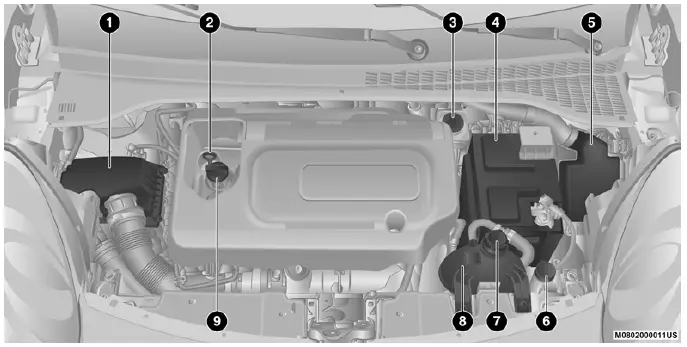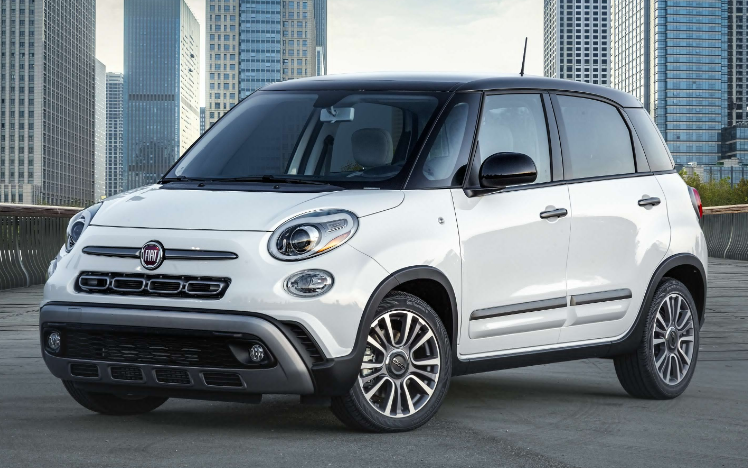
2020 Fiat 500L Maintenance Schedule
Welcome to the in-depth maintenance manual for the 2020 Fiat 500L, a car renowned for its distinctive fusion of utility and Italian style. Knowing how to look after and maintain your Fiat 500L is crucial to ensuring its durability, performance, and safety, whether you’re the proud owner of this small car or contemplating it as your next buy. This article will cover all facets of maintaining your 2020 Fiat 500L, from basic maintenance jobs to trickier operations. You can find helpful advice on engine upkeep, routine maintenance, tire care, fluid checks, and how to handle typical problems.
Your Fiat 500L will continue to give you a smooth and comfortable driving experience if you take care of it, and doing so will also help to keep its value high over time. Consequently, whether you’re an experienced do-it-yourself mechanic or you prefer to leave maintenance to the experts, this book will arm you with the information you need to keep your 2020 Fiat 500L in superb shape. Let’s set off on this adventure to learn the finest procedures for maintaining your Fiat 500L so you may drive with assurance and comfort.
SCHEDULED SERVICING
Your vehicle is equipped with an automatic oil change indicator system. The oil change indicator system will remind you that it is time to take your vehicle in for scheduled maintenance.
Based on engine operation conditions, the oil change indicator message will illuminate in the instrument cluster. This means that service is required for your vehicle. Operating conditions such as frequent short-trips, trailer tow and extremely hot or cold ambient temperatures will influence when the “Change Oil” or “Oil Change Required” message is displayed. Severe operating conditions can cause the change oil message to illuminate as early as 3,500 miles (5,600 km) since last reset. Have your vehicle serviced as soon as possible, within the next 500 miles (805 km). An authorized dealer will reset the oil change indicator message after completing the scheduled oil change. If a scheduled oil change is performed by someone other than an authorized dealer, the message can be reset by referring to the steps described under
“Instrument Cluster Display” in “Getting To Know Your Instrument Panel” for further information.
NOTE:
Under no circumstances should oil change intervals exceed 10,000 miles (16,000 km), 12 months, or 350 hours of engine run time, whichever comes first. The 350 hours of engine run or idle time is generally only a concern for fleet customers.
Severe Duty All Models
Change engine oil at 4,000 miles (6,500 km) or 350 hours of engine run time if the vehicle is operated in a dusty and off-road environment, or is operated predominately at idle or only very low engine RPM. This type of vehicle use is considered Severe Duty.
Once A Month Or Before A Long Trip:
- Check engine oil level
- Check windshield washer fluid level
- Check the tire inflation pressures and look for unusual wear or damage
- Check the fluid levels of the coolant reservoir, and brake master cylinder reservoir, and fill as needed
- Check function of all interior and exterior lights
MAINTENANCE PLAN
Required Maintenance Intervals
Refer to the maintenance plan on the following pages for the required maintenance intervals.
| At Every Oil Change Interval As Indicated By Oil Change Indicator System: |
| l Change oil and filter |
| l Rotate the tires. Rotate at the first sign of irregular wear, even if it occurs before the oil indicator system turns on. |
| l Inspect battery and clean and tighten terminals as required |
| l Inspect the CV/Universal joints |
| l Inspect brake pads, shoes, rotors, drums, and hoses |
| l Inspect engine cooling system protection and hoses |
| l Check and adjust hand brake |
| l Inspect exhaust system |
| l Inspect engine air cleaner if using in dusty or off-road conditions |
| Mileage or time passed (whichever comes first): | 20,000 | 30,000 | 40,000 | 50,000 | 60,000 | 70,000 | 80,000 | 90,000 | 100,000 | 110,000 | 120,000 | 130,000 | 140,000 | 150,000 |
| Or Years: | 2 | 3 | 4 | 5 | 6 | 7 | 8 | 9 | 10 | 11 | 12 | 13 | 14 | 15 |
|
Or Kilometers: |
32,000 | 48,000 | 64,000 | 80,000 | 96,000 | 112,000 | 128,000 | 144,000 | 160,000 | 176,000 | 192,000 | 208,000 | 224,000 | 240,000 |
| Additional Inspections | ||||||||||||||
| Inspect the CV/Universal joints. | X | X | X | X | X | X | X | X | X | X | X | X | X | X |
| Inspect front suspension, tie rod ends and boot seals, and replace if necessary. |
X |
X |
X |
X |
X |
X |
X |
|||||||
| Inspect the brake linings, parking brake function. | X | X | X | X | X | X | X | |||||||
| Additional Maintenance | ||||||||||||||
| Replace engine air filter. | X | X | X | X | X | |||||||||
| Replace cabin air filter. | X | X | X | X | X | X | X | |||||||
| Replace brake fluid every two years.
1 |
X | X | X | X | X | X | X | |||||||
| Clean and lube sunroof tracks — if equipped. | X | X | X | X | X | X | X | X | X | X | X | X | X | X |
| Replace spark plugs. 2 | X | X | X | X | X | |||||||||
| Mileage or time passed (whichever comes first): | 20,000 | 30,000 | 40,000 | 50,000 | 60,000 | 70,000 | 80,000 | 90,000 | 100,000 | 110,000 | 120,000 | 130,000 | 140,000 | 150,000 |
| Or Years: | 2 | 3 | 4 | 5 | 6 | 7 | 8 | 9 | 10 | 11 | 12 | 13 | 14 | 15 |
|
Or Kilometers: |
32,000 | 48,000 | 64,000 | 80,000 | 96,000 | 112,000 | 128,000 | 144,000 | 160,000 | 176,000 | 192,000 | 208,000 | 224,000 | 240,000 |
| Flush and replace the engine coolant at 10 years or 150,
000 miles (240,000 km), whichever comes first. |
X |
X |
||||||||||||
| Inspect and replace PCV valve if necessary. | X | |||||||||||||
| Replace the timing belt. | X |
- The brake fluid change interval is time based only, mileage intervals do not apply.
- The spark plug change interval is mileage based only, yearly intervals do not apply.
WARNING
- You can be badly injured working on or around a motor vehicle. Do only service work for which you have the knowledge and the right equipment. If you have any doubt about your ability to perform a service job, take your vehicle to a competent mechanic.
- Failure to properly inspect and maintain your vehicle could result in a component malfunction and effect vehicle handling and performance. This could cause an acci-dent.
HEAVY DUTY USE OF THE VEHICLE
Change engine oil at 4,000 miles (6,500 km) or 350 hours of engine run time if the vehicle is operated in a dusty and off road environment or is operated predominately at idle or only very low engine RPM. This type of vehicle use is considered Severe Duty.
ENGINE COMPARTMENT — 1.4L TURBO
- Air Cleaner Filter
- Engine Oil Dipstick
- Brake Fluid Reservoir
- Battery
- Front Distribution Unit (Fuses)
- Washer Fluid Reservoir Cap
- Coolant Pressure Cap
- Coolant Pressure Bottle
- Oil Fill Cap
CHECKING OIL LEVEL
To ensure proper engine lubrication, the engine oil must be maintained at the correct level. Check the oil level at regular intervals, such as every fuel stop. The best time to check the engine oil level is about five minutes after a fully warmed up engine is shut off. Checking the oil while the vehicle is on level ground will improve the accuracy of the oil level readings.
There are four possible dipstick types:
- Crosshatched zone
- Crosshatched zone marked SAFE
- Crosshatched zone marked with MIN at the low end of the range and MAX at the high end of the range
- Crosshatched zone marked with dimples at the MIN and the MAX ends of the range
NOTE:
Always maintain the oil level within the cross-hatch markings on the dipstick.
Adding 1 quart (1.0 liters) of oil when the reading is at the low end of the dipstick range will raise the oil level to the high end of the range marking.
CAUTION
Overfilling or underfilling the crankcase will cause aeration or loss of oil pressure. This could damage your engine.
ADDING WASHER FLUID
The windshield washer fluid reservoir is located in the engine compartment, and the fluid level should be checked at regular intervals. Fill the reservoir with windshield washer solvent (not engine coolant/antifreeze). Refer to “Engine Compartment” in this section for further information.
WARNING
Commercially available windshield washer solvents are flammable. They could ignite and burn you. Care must be exercised when filling or working around the washer solution.
MAINTENANCE-FREE BATTERY
Your vehicle is equipped with a maintenance-free battery. You will never have to add water, nor is periodic maintenance required.
WARNING
- Battery fluid is a corrosive acid solution and can burn or even blind you. Do not allow battery fluid to contact your eyes, skin, or clothing. Do not lean over a battery when attaching clamps. If acid splashes in eyes or on skin, flush the area immediately with large amounts of water. Refer to “Jump Starting Procedure” in “In Case Of Emer-gency” for further information.
- Battery gas is flammable and explosive. Keep flame or sparks away from the battery. Do not use a booster battery or any other booster source with an output greater than 12 Volts. Do not allow cable clamps to touch each other.
- Battery posts, terminals, and related acces-sories contain lead and lead compounds. Wash hands after handling.
- The battery in this vehicle has a vent hose that should not be disconnected and should only be replaced with a battery of the same type (vented).
CAUTION
- It is essential when replacing the cables on the battery that the positive cable is attached to the positive post and the nega-tive cable is attached to the negative post. Battery posts are marked positive (+) and negative (-) and are identified on the battery case. Cable clamps should be tight on the terminal posts and free of corrosion.
- If a “fast charger” is used while the battery is in the vehicle, disconnect both vehicle battery cables before connecting the charger to the battery. Do not use a “fast charger” to provide starting voltage.
PRESSURE WASHING
CAUTION
Cleaning the engine compartment with a high pressure washer is not recommended. Precautions have been taken to safeguard all parts and connections however, the pressures generated by these machines is such that complete protection against water ingress cannot be guaranteed.
DEALER SERVICE
An authorized dealer has the qualified service personnel, special tools, and equipment to perform all service operations in an expert manner. Service Manuals are available which include detailed service information for your vehicle. Refer to these Service Manuals before attempting any procedure yourself.
NOTE:
Intentional tampering with emissions control systems may void your warranty and could result in civil penalties being assessed against you.
WARNING
You can be badly injured working on or around a motor vehicle. Only do service work for which you have the knowledge and the proper equipment. If you have any doubt about your ability to perform a service job, take your vehicle to a competent mechanic.
FAQs
According to Fiat, you should replace the oil and oil filter every 12 months or 7,500 miles, whichever comes first.
Use 5W-40 synthetic oil that complies with the requirements listed in your owner’s manual.
Every time you change your oil, you should check the air filter and replace it if it’s unclean or blocked.
To guarantee even wear, rotate the tires every 6,000 to 8,000 miles.
The recommended tire pressure can be found on a label inside the driver’s door jamb or in the owner’s handbook. It usually hovers about 32 PSI.
While brake rotors can last longer and may need replacement after 70,000 miles or when they are worn out or broken, brake pads normally need to be replaced every 30,000 to 70,000 miles.
According to your owner’s manual or every 60,000 miles, Fiat advises changing the automatic transmission fluid.
Depending on driving conditions and air quality, the cabin air filter should be changed every 15,000 to 30,000 miles.
No, the Fiat 500L can run on standard unleaded fuel with an octane value of 87.
Once every five years or 100,000 miles, whichever comes first, check the coolant level.
Every 100,000 miles, the spark plugs should be changed, but your owner’s handbook can provide more detailed instructions.
Every 60,000 to 100,000 miles, or as needed, check the serpentine belt for cracks or other damage, and replace it if necessary.
Yes, it’s essential to adhere to the manufacturer’s suggested maintenance program to keep your Fiat 500L in good working order and to keep your warranty valid.
It’s true that many simple maintenance jobs can be carried out by do-it-yourselfers, but it’s crucial to adhere to the right procedures indicated in the owner’s manual.
By using the official Fiat website or calling Fiat customer care, you may identify a licensed Fiat service facility near you. They can also help you select a trustworthy service center in your area.
Useful Links
View Full pdf: 2020 Fiat 500 Owner’s Manual
2020 Fiat 500L Transmission Guide

